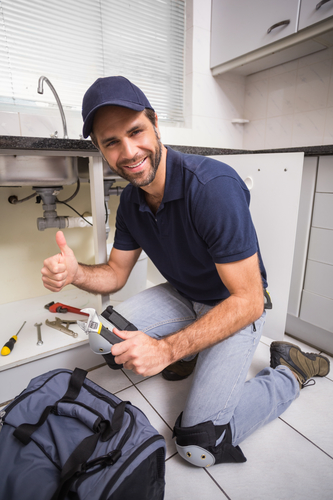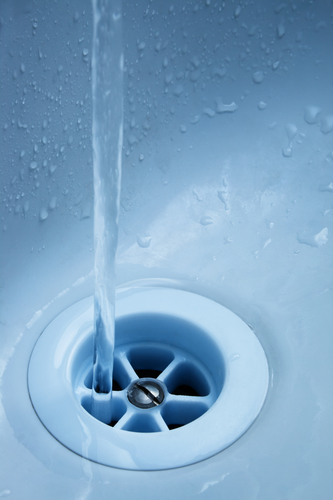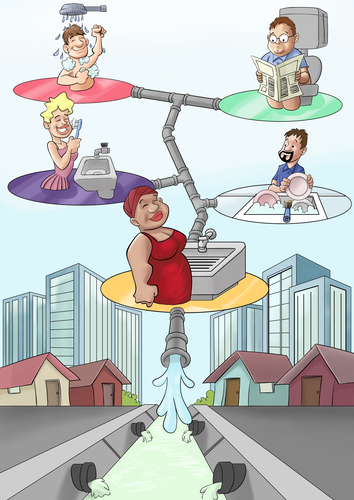Using the garbage disposal can be a lot of fun, especially for small children. However, it can be a pain in the neck if you have to clean it and, truth be told, most of us do it completely wrong, getting ourselves into more trouble than before. So, before you put your hands on that no man’s land full of sludge and glop, here are some tips to help you get the job done in an eye’s blink.
Use Citrus Weekly
 Your garbage disposal works really hard and deserves a thorough clean up every week. To remove build-in food from the blades without shedding tons of sweat, place frozen lemon and orange peels (here are other fantastic ways to use lemon peels to clean stuff in the house!) in the disposal and grind them up. The citrus peels will release oil that will not only clean your blades perfectly from food residues, but also deodorize the disposal, leaving nothing but a lovely fresh fragrance behind.
Your garbage disposal works really hard and deserves a thorough clean up every week. To remove build-in food from the blades without shedding tons of sweat, place frozen lemon and orange peels (here are other fantastic ways to use lemon peels to clean stuff in the house!) in the disposal and grind them up. The citrus peels will release oil that will not only clean your blades perfectly from food residues, but also deodorize the disposal, leaving nothing but a lovely fresh fragrance behind.
Backup Plan or Plan B: If you don’t have lemon or orange peels at home, you can clean build-up from the blades by using a tray of ½ cup of baking soda (here are more amazing ways to use baking soda to clean the house!) and ice cubes.
To Remove nasty smell and odors:
This could be either a drain- or splash guard-related problem (or it could be both).
How to Clean the Drain (Green Way)
Just pour ½ cup of baking soda right down the drain and add a cup of boiling hot vinegar (white-you can heat it in the microwave). You will see the baking soda foam. After about 5-10 minutes, pour a quart of boiling water down the drain and flush all food residues down.
Green Odor Buster for the Splash Guard
The rubber splash guard is where all gook accumulates. Cleaning it is much more difficult than cleaning the drain but it definitely is worth every effort, given that, in most cases, nasty odors comes from it. That aside, leaving the splash guard neglected is like providing germs a cozy breeding place.
Things you will need:
✔ Old toothbrush
✔ Rubber gloves
✔ Soapy water (hot)
Now, if your splash guard is removable, you need to remove it (always wearing gloves) and scrub the top and bottom with soapy water and a toothbrush. Rinse and repeat, if necessary. Replace.
For non-removable splash guards, wear your gloves, scrub the top side and rinse. Then, lift up the slash guard one section at a time and scrub its underside until all gunge is removed. Rinse well.
Note: An overloaded garbage disposal can lead to serious clogging of the drain. It is best to avoid putting it fibrous foods or pouring grease into it. Moreover, feeding garbage with the speed of light into the disposal is also not recommended. Instead, have some cold water running and slowly put the garbage in.
What NOT to do to Avoid Clogs, Breakdowns, & Floods in the House:
Yeah, you just found out that the flushable kitty litter is not flushable after all. What happens now? Be prepared to pay a decent amount of money to get your toilet unclogged. Maybe, you have been experiencing clogs quite frequently. Could it be because you might be doing some of the following?
1. You use Drano way too often
 Chemicals rarely get the job done all the way, so better stop using them to clear of open drains. Besides using a very dangerous and harsh material that should not be handled by non-professionals to begin with, you also run the risk of ruining your drain pipes AND the necessary equipment that is there to clear the stoppage.
Chemicals rarely get the job done all the way, so better stop using them to clear of open drains. Besides using a very dangerous and harsh material that should not be handled by non-professionals to begin with, you also run the risk of ruining your drain pipes AND the necessary equipment that is there to clear the stoppage.
Tip: Better be safe than sorry so try to keep hair and grease, the most commonly-found clog suspects, out of drains.
2. You Treat your Toilet like your Second (or first) Garbage Disposal
Personal cleaning wipes, feminine hygiene products, make-up remover pads, toilet scrubbers, and cat litter into the toilet, even if they come with a “flushable” label, because they don’t disintegrate fast enough. This is why your drain pipe get blocked ultimately.
3. You Play Plumber
No matter how easy a task might seem to you, trying to tackle the plumbing issues yourself will most likely end up in a disaster. Diagnosing and fixing such problems should be the job of someone that knows about plumbing, not just any handyman. If you think about it, you are actually saving yourself money in the long run.
4. You Use Tank Toilet Fresheners (Drop in)
I love the blue water that adds color and deodorizes the bathroom, but professionals say this is a huge NOT do. They recommend we ditch the drop in toilet fresheners instantly because they contain chemicals that wear out some important parts of the inside of the tank. Also, tablets may get stuck in the flush valve, making you be completely unable to flush.
5. You Mess with the Water Heater’s Pressure Valve
Testing the temperature and pressure of the water heater’s valve or attempting to drain your water heater yourself are tasks that should be performed by a professional, because if you try to remove the valve without knowing exactly how, you may get serious burns (not to mention property damage) from the hot water dispersed because of the tank’s pressure.
Note: A water leak protection can save you from a lot of troubles. It is advised not to skimp on it, considering that you get a main water shut-off and an alarm in case of a leak in your water heater, sinks, etc.
Tip: To prevent floods and leaks, replace your tank water heater every 10-12 years. An outdated water heat system can cause enormous damage to your property. Imagine being on vacation when it busts!
Final Notes:
1. Always know where your main water valve is. This includes the emergency shut off valves, too. It is also recommended to know how to turn them off (you can ask a pro to show you at no charge).
2. Never forget to change the water hoses (i.e. dishwasher and washing machine). They can burst any time without giving you a sign first, causing major floods. Have them replaced with new ones every 5 years or so and use stainless steel on all water lines if you can afford the extra cost.
